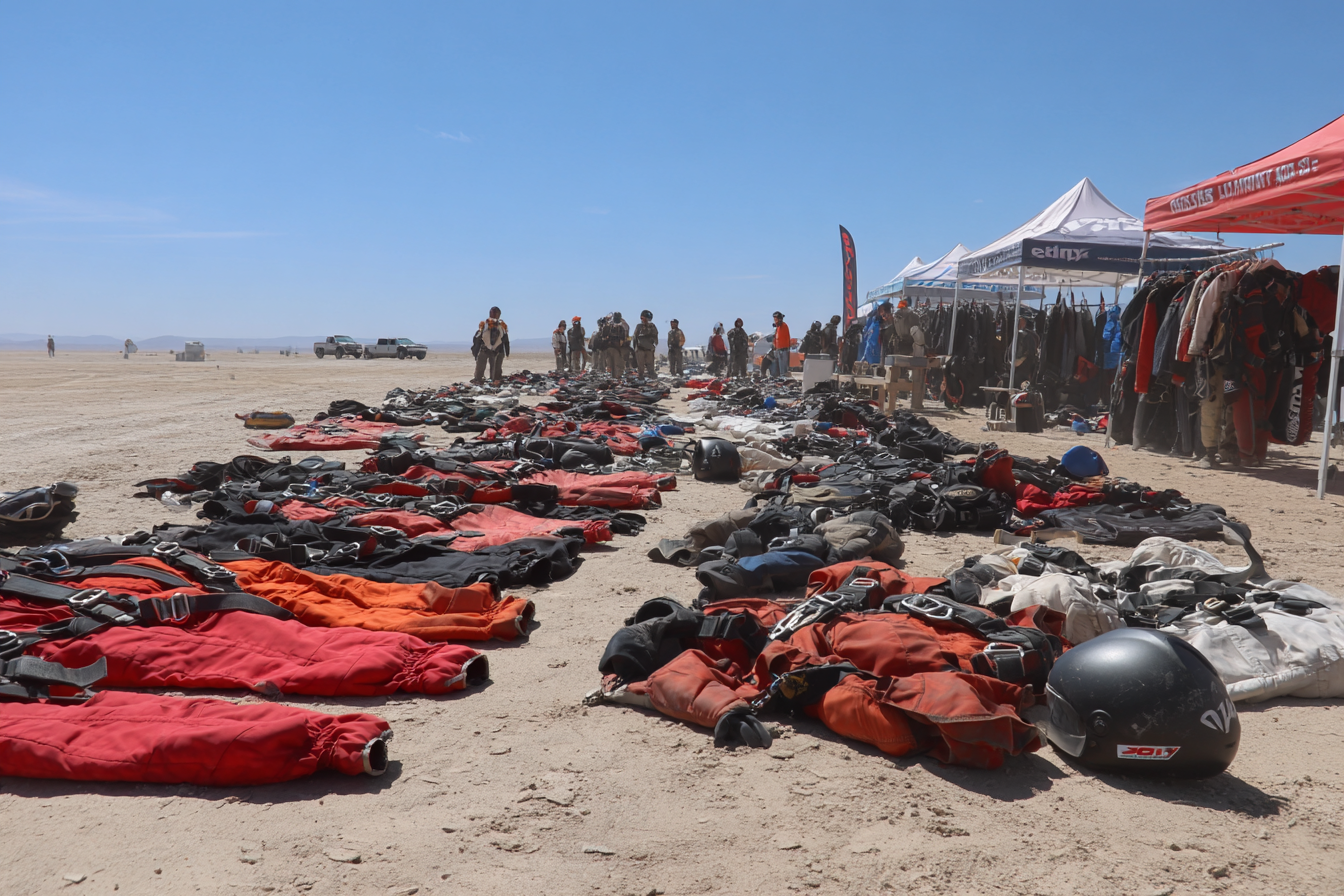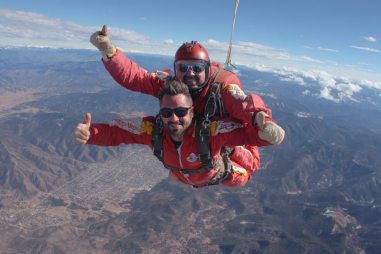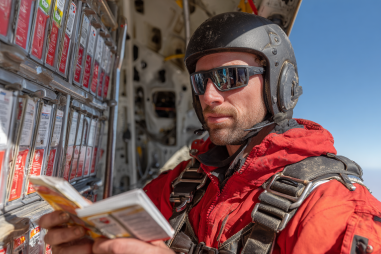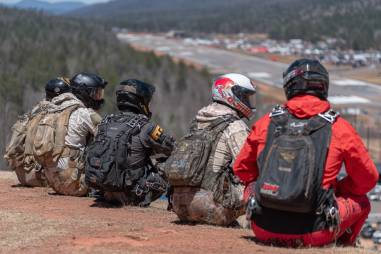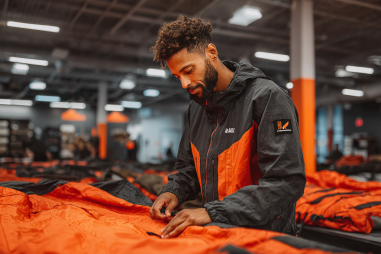Skydiving is a thrilling and high-adrenaline sport that requires a strong foundation of knowledge, particularly when it comes to the specialized equipment that keeps jumpers safe and in control. Whether you’re a beginner or a seasoned veteran, understanding the various types of skydiving equipment is crucial to ensuring a safe and enjoyable experience. From the essential parachutes and harness systems to cutting-edge altimeters and wingsuits, each piece of gear plays a vital role in your jump. This article will guide you through the essential types of skydiving equipment every jumper should know about, helping you prepare for your next adventure in the sky.
Types of Parachutes: Main and Reserve
The most critical piece of equipment for any skydiver is the parachute. Generally, skydivers use two parachutes: the main parachute and the reserve parachute. Both are designed to bring the jumper safely to the ground but serve different purposes.
The main parachute is the primary canopy deployed during the jump. Typically rectangular or elliptical, modern main parachutes are designed for stability and control. They vary in size based on the jumper’s weight and experience level, allowing for different rates of descent and maneuverability. Experienced skydivers might choose a smaller canopy for faster speeds and greater agility, while beginners usually opt for larger, more stable parachutes for added safety.
The reserve parachute acts as a fail-safe, meant to be deployed if the main chute fails or malfunctions. It undergoes rigorous inspection and is packed according to strict safety regulations. Reserve canopies are typically more robust and reliable, often designed to deploy quickly and open at slower speeds for maximum safety.
Jumpsuits and Helmets: Protection and Aerodynamics
Proper attire is essential not only for comfort but also for safety and performance during a skydive. The jumpsuit is more than just a suit—it enhances your aerodynamics and protects your skin from the high wind speeds encountered during freefall.
Jumpsuits come in a variety of styles depending on the discipline:
- Basic jumpsuits: Designed for beginners, providing comfort and protection.
- Speed suits: Made from tighter-fitting, durable materials to reduce drag for more advanced jumpers doing formation skydives.
- Wingsuits: Equipped with fabric wings between the arms and legs, allowing the jumper to “fly” horizontally and extend freefall time.
Equally important is the helmet, which protects the head during jumps and landings. Helmets range from simple soft-shell models to full-face helmets with integrated communication systems, depending on the jumper’s preference and the type of jump. A helmet not only safeguards against impact but also improves aerodynamics, reducing wind resistance and noise.
Altimeters and Tracking Devices
Knowing your altitude accurately is a life-saving aspect of skydiving. Altimeters help skydivers monitor their height above the ground, ensuring timely deployment of parachutes and safe landings. They come in two main types:
- Analog altimeters: Classic watches with a needle pointing to the current altitude.
- Digital altimeters: Provide clear numerical altitude readings, sometimes paired with audible alarms to alert jumpers at preset heights.
More advanced skydivers utilize tracking devices equipped with GPS technology. These devices can record jump data, track location, analyze flight paths, and help in navigation for complex jump types such as cross-country or group formations. Some tracking devices also offer real-time telemetry for coaching and safety purposes.
Automatic Activation Devices (AAD)
An Automatic Activation Device (AAD) is a critical piece of safety equipment designed to automatically deploy the reserve parachute if the jumper fails to open the main parachute by a certain altitude. This can happen due to unconsciousness or disorientation during freefall.
Modern AADs use barometric sensors to monitor altitude and descent rate continuously. If they detect that the skydiver is still in freefall at the activation altitude, the device activates the reserve parachute deployment system. This technology has been instrumental in saving countless lives and is often mandatory for licensing in many countries.
Harness and Container Systems
The harness and container system is the backbone that holds your parachutes securely while giving you the ability to deploy them comfortably and reliably. The container is a specially designed backpack that houses the main and reserve parachutes. The harness straps keep everything securely fastened to your body.
Modern containers are ergonomically crafted for comfort during flight and landing, with features such as adjustable leg straps, padded shoulder straps, and streamlined profiles for reduced drag. The system includes deployment handles for both main and reserve chutes along with a 3-ring release system that allows the jumper to cut away the main parachute if necessary.
Choosing the right harness and container depends on your body size, skill level, and the type of jumps you plan to make. Proper fitting and professional assembly are essential to ensure everything functions smoothly.
Specialized Equipment for Wingsuit and Canopy Piloting
For advanced skydivers, specialized equipment can dramatically expand the experience and challenge of skydiving. Two popular disciplines with unique gear requirements are wingsuit flying and canopy piloting.
Wingsuits are specialized jumpsuits equipped with webbed fabric between the arms and legs, creating wing-like surfaces. This allows the jumper to glide horizontally and control their trajectory with increased surface area and lift. Wingsuit flying demands an expertly fitted wingsuit along with reinforced helmets and goggles for maximum protection.
Canopy piloting, or swooping, involves maneuvering the parachute at high speeds close to the ground, requiring exceptional skill and precision. This discipline uses high-performance, responsive paragliders designed for rapid, sharp turns, often much smaller than typical canopies. In addition to advanced canopies, jumpsuits made from durable materials, streamlined helmets, and eye protection are crucial for safety in canopy piloting.
Equipment Maintenance and Safety Checks
Proper maintenance and regular inspections of your skydiving equipment are vital for safety and extending the life of your gear. Skydiving equipment endures significant wear and tear due to exposure to extreme forces, weather conditions, and frequent repacking.
Key maintenance tasks include:
- Regular inspection of parachutes for tears, frays, or damage.
- Checking the integrity of the harness and container stitching and hardware.
- Ensuring the automatic activation device is functioning correctly and is within service dates.
- Calibrating and testing altimeters for accuracy.
- Cleaning and properly storing equipment to prevent mold, mildew, or deterioration.
- Having parachutes repacked by certified riggers within required time intervals.
Pre-jump checks are also essential, where jumpers personally inspect their gear to confirm proper packing and set-up. Safety in skydiving depends heavily on the condition and reliability of your equipment, so never overlook these steps.
Finding the Right Gear and Caring for Your Equipment
Selecting the right skydiving equipment is a blend of understanding your skill level, jump style, and personal preferences. Beginner jumpers will prioritize stability and safety, focusing on larger parachutes and basic gear, while advanced jumpers may opt for more specialized and performance-enhancing equipment.
Working closely with experienced instructors and certified riggers can help you make informed decisions tailored to your needs. Always prioritize quality and certified gear over cost savings when it comes to skydiving, as your life depends on it.
Once you’ve chosen your gear, caring for it through proper handling, maintenance, and storage is essential. Store your equipment in a cool, dry place away from direct sunlight and chemicals. Follow manufacturer guidelines for cleaning and servicing, and never hesitate to consult professionals when in doubt.
By investing time in choosing the right equipment and maintaining it diligently, you can ensure many safe, exciting, and rewarding skydives ahead.

